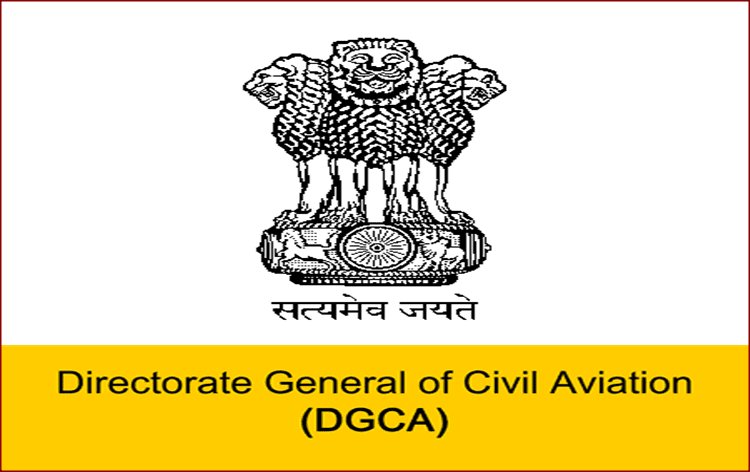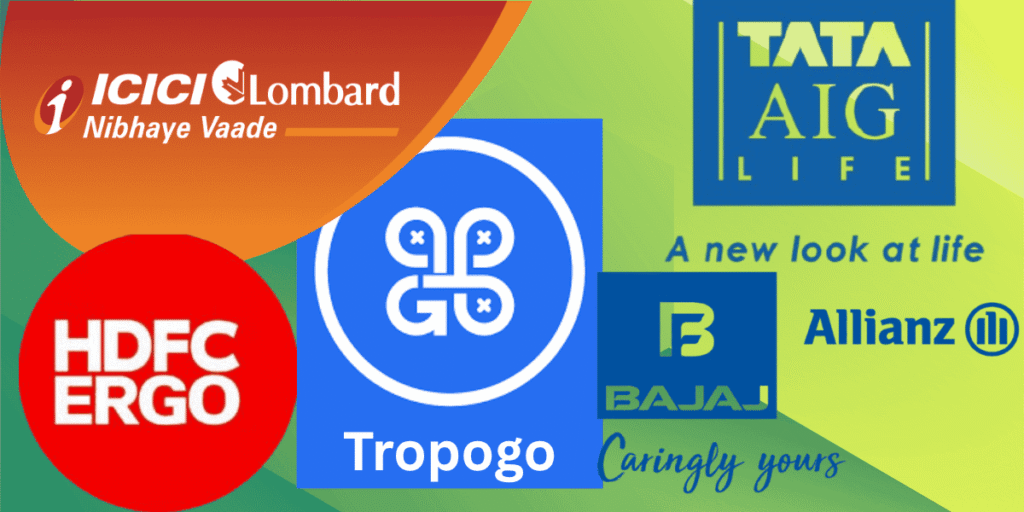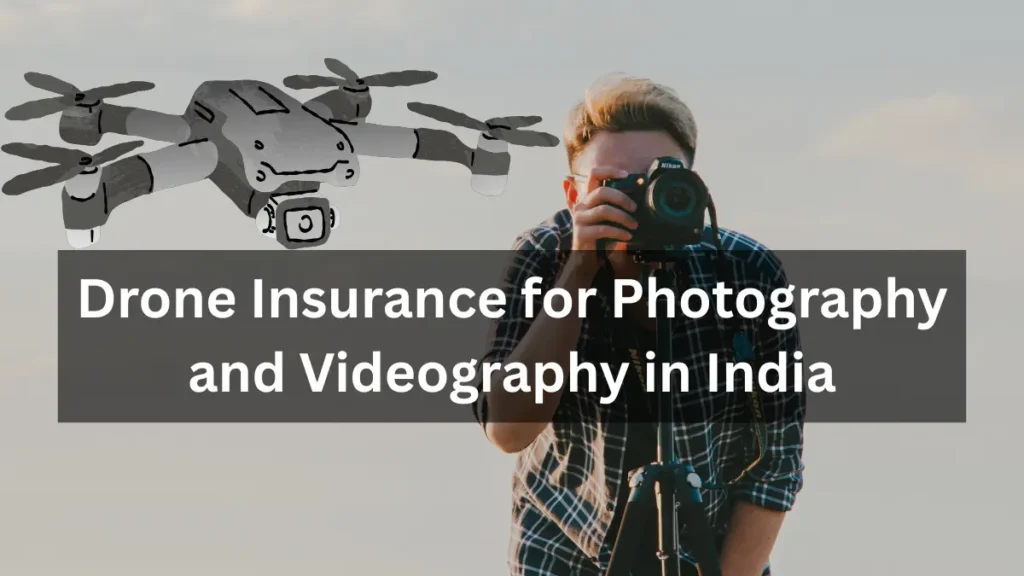Drone Insurance for Photography and Videography in India in 2025 is a crucial topic for professionals navigating the evolving landscape of aerial imaging. In this ever-expanding world of drone technology, photographers and videographers in India are increasingly relying on unmanned aerial vehicles (UAVs) to capture stunning visuals from the skies. Whether it’s wedding shoots, real estate surveys, or cinematic productions, drones offer unparalleled perspectives.
However, with great innovation comes significant risks—accidents, equipment damage, third-party liabilities, and regulatory compliance. This is where drone insurance for photography in India becomes indispensable. The demand for specialized aerial photography insurance in 2025 has surged, driven by stricter regulations and the growing commercial use of drones.
This comprehensive guide explores the best insurance for drone photographers, highlighting top providers, coverage options, and essential considerations. We’ll delve into why drone videography insurance in India is not just a safeguard but a necessity for sustainable business operations. With the Indian drone market projected to reach $1.81 billion by 2025, fueled by sectors like media and entertainment, ensuring your gear and operations are protected is paramount. Drawing from the latest data, including updates from the Directorate General of Civil Aviation (DGCA) and leading insurers, this post aims to equip you with actionable insights.
The Rise of Drone Photography and Videography in India
Drone photography and videography have transformed creative industries in India. From capturing the vibrant hues of Rajasthan’s deserts to filming high-octane action sequences in Bollywood, drones provide efficiency and creativity that traditional methods can’t match. According to a 2025 report from the Federation of Indian Chambers of Commerce & Industry (FICCI), the media and entertainment sector alone saw a 25% increase in drone usage for content creation last year. This growth is mirrored in wedding photography, where drones add a cinematic flair, and in corporate videography for promotional materials.
However, challenges abound. Drones are prone to crashes due to technical failures, adverse weather, or operator errors—issues that can cost thousands in repairs. Third-party damages, such as a drone accidentally hitting a bystander or property during a shoot, can lead to legal battles. In urban areas like Mumbai or Delhi, where restricted airspace is common, non-compliance can result in fines up to ₹1 lakh under DGCA rules. Drone insurance for photography in India mitigates these risks, covering hull damage (the drone itself), payloads like high-resolution cameras, and liabilities.
In 2025, the integration of AI and 5G has made drones smarter, but also more expensive—professional models like the DJI Mavic 3 Cine can cost over ₹2 lakh. Losing such an investment without insurance could cripple a small business. Moreover, clients increasingly demand proof of insurance before hiring, viewing it as a mark of professionalism.
Necessity of Drone Insurance for Photography and Videography in India
For drone photographers and videographers, insurance isn’t optional—it’s a lifeline. Aerial photography insurance in 2025 addresses the unique vulnerabilities of this niche. Consider a scenario: during a videography session for a real estate project, your drone collides with a power line, damaging the camera payload and causing minor injury to a passerby. Without coverage, you’d face repair costs, medical bills, and potential lawsuits.
Key reasons to invest in drone videography insurance in India include:
- Financial Protection Against Accidents: Drones face risks like battery failures, signal interference, or bird strikes. Comprehensive policies cover repair or replacement, with premiums starting as low as ₹4,000 annually for basic liability.
- Liability Coverage: Third-party claims are common in populated shoot locations. Policies provide up to ₹7.5 lakh for property damage and unlimited for bodily injuries or death. This is crucial for best insurance for drone photographers operating in events or urban settings.
- Payload Safeguard: High-end cameras and gimbals are the heart of photography drones. Add-ons cover these, often valued at ₹50,000–₹1 lakh, ensuring you don’t lose creative tools.
- Regulatory Compliance: As per DGCA’s Drone Rules 2021 (updated in 2025), third-party liability insurance is mandatory for commercial drones over 250g. Non-compliance can lead to fines or license suspension.
- Business Continuity: Quick claim settlements (within 24 hours for surveys) minimize downtime. In a competitive market, this keeps your operations soaring.
Statistics from IRDAI’s 2025 report show a 40% rise in drone-related claims, mostly from commercial users like photographers. Investing in drone insurance for photography in India not only protects assets but also enhances credibility with clients.
DGCA Regulations for Drone Operations in India 2025

The DGCA oversees drone regulations to ensure safety and accountability. As of today, key updates emphasize insurance and certification.
- Drone Classification: Drones are categorized by weight: Nano (<250g, no insurance needed for recreational), Micro (250g–2kg), Small (2–25kg), Medium (25–150kg), and Large (>150kg). For photography/videography, most fall under Micro/Small, requiring registration on DigitalSky platform.
- Insurance Mandate: Third-party liability is compulsory for all commercial operations and drones over 250g, covering potential damage to life or property. This aligns with Motor Vehicles Act 1988 provisions. Nano drones are exempt unless used commercially.
- Pilot Requirements: A Remote Pilot Certificate (RPC) is mandatory for commercial flights, obtained from DGCA-approved training organizations. Cost: ₹10,000–₹50,000, including medical exams.
- Operational Rules: Flights limited to 120m altitude, visual line of sight (VLOS) unless BVLOS-approved. No-fly zones include airports and military areas. Night flying requires add-on permissions.
- Penalties: Fines up to ₹1 lakh for uninsured operations. DGCA’s 2025 amendments introduce stricter audits for commercial users.
For aerial photography insurance in 2025, ensure policies comply with these, including UIN (Unique Identification Number) linkage.
Types of Drone Insurance Coverage Available
Drone insurance policies in India are tailored for diverse needs, especially for photography and videography.
- Third-Party Liability: Mandatory; covers damages to others. Limit: ₹7.5 lakh for property, unlimited for injuries.
- Hull Coverage: Protects the drone body against accidents, theft, or loss. Essential for expensive models used in videography.
- Payload Coverage: Safeguards cameras, sensors, and gimbals—critical for best insurance for drone photographers. Add-on premiums: ₹5,000–₹15,000 annually.
- Personal Accident Cover: For operator injuries during flights.
- Add-Ons:
- BVLOS: For extended shoots beyond sight.
- Night Flying: Ideal for low-light videography.
- Transit Cover: Protects during transport to shoot locations.
- Training Cover: For certified training drones.
Comprehensive plans combine these, with short-term options (1 day to 1 month) for project-based work. Premiums vary: ₹4,000 for basic to ₹25,000 for full coverage.
Top Drone Insurance Providers in India 2025

Based on 2025 rankings, here are the leading providers for drone videography insurance in India, focusing on photography needs.
- TropoGo:
India’s premier online platform, partnering with TATA AIG, Bajaj Allianz, IFFCO Tokio, and National Insurance. Ideal for photographers with flexible “pay-as-you-fly” models (hourly/daily). Coverage includes hull (up to drone value), liability (₹7.5 lakh property, unlimited injury), and payload for cameras (₹5,000–₹15,000 add-on). 2025 updates: App integration for real-time flight logs. Premiums: ₹4,000–₹20,000 annually. Claim ratio: 95%. Pros: Quick online purchase, BVLOS/night add-ons. Cons: Limited to partnered insurers. - HDFC ERGO:
Offers comprehensive plans with high settlement ratio (96%). Tailored for aerial photography, covering payloads and transit. Add-ons: Night flying, BVLOS. 2025 features: AI-based risk assessment for lower premiums. Premiums: ₹5,000–₹25,000. Extensive network (9,800+ service points). Pros: Pay-as-you-fly, robust support. Cons: Higher premiums for high-value drones. - TATA AIG:
Collaborates with Drone Federation of India for custom plans. Strong on payload protection for videography sensors. Coverage: Hull, liability, personal accident. 2025 updates: Digital policy management, 98.4% claim ratio. Premiums: ₹4,500–₹22,000. Pros: BVLOS/transit add-ons, fast claims. Cons: Requires DFI tie-up for some discounts. - ICICI Lombard:
Provides short-term policies (1 day/week/month), perfect for freelance photographers. Covers accidental damage, theft, transit, and cyber risks (e.g., data breaches from drone footage). Liability: Standard limits. 2025 enhancements: 24/7 support, 96% claim ratio. Premiums: ₹5,000–₹18,000. Pros: Endorsements during policy, training drone cover. Cons: No pay-per-hour. - Bajaj Allianz:
Affordable entry with premiums from ₹4,000. Comprehensive for videography, including payload and hull. Add-ons: BVLOS, night. 2025: Fast surveyor deployment (24 hours), 96% ratio. Pros: Budget-friendly, all-India coverage. Cons: Fewer branches in rural areas.
Other notable: SBI General, New India Assurance for basic plans.
| Provider | Key Coverage for Photography | Annual Premium Range (₹) | Claim Settlement Ratio (%) | Add-Ons Available | Best For |
|---|---|---|---|---|---|
| TropoGo | Hull, Liability, Payload (Cameras/Sensors) | 4,000–20,000 | 95 | BVLOS, Night, Transit | Flexible Freelancers |
| HDFC ERGO | Payload, Transit, Accident | 5,000–25,000 | 96 | Night, BVLOS | High-Value Drones |
| TATA AIG | Payload, Personal Accident | 4,500–22,000 | 98.4 | BVLOS, Training | Commercial Videographers |
| ICICI Lombard | Theft, Cyber, Short-Term | 5,000–18,000 | 96 | Transit, Night | Project-Based Shoots |
| Bajaj Allianz | Hull, Liability, Affordable | 4,000–15,000 | 96 | BVLOS, Payload | Budget-Conscious Pros |
Factors to Consider When Choosing Drone Insurance
Selecting the best insurance for drone photographers involves evaluating:
- Drone Value and Usage: Higher-value models need comprehensive hull/payload cover.
- Premium vs. Coverage: Balance cost with limits—opt for at least ₹7.5 lakh liability.
- Claim Process: Providers like TropoGo offer 24-hour surveys.
- Add-Ons: Essential for BVLOS in remote shoots.
- Provider Reputation: Check IRDAI ratios (aim for >95%).
- Policy Flexibility: Short-term for seasonal work.
Compare via platforms like Policybazaar.
Tips for Claiming Drone Insurance
- Report incidents within 24 hours.
- Submit documents: Policy, UIN, photos, FIR if theft.
- Use app logs for proof.
- Avoid non-compliant flights to prevent denials.
Future Trends in Drone Insurance for 2025 and Beyond
By 2029, the global drone photography market hits $1.89 billion. In India, AI-driven policies and parametric insurance (auto-payouts via sensors) are emerging. Expect more cyber covers for data-heavy videography.
Conclusion
Drone Insurance Providers for Photography and Videography in India offer robust options to protect your passion and profession. From TropoGo’s flexibility to ICICI Lombard’s versatility, choose based on needs. Prioritize drone insurance for photography in India to fly confidently, ensuring aerial photography insurance in 2025 keeps your business aloft. Consult providers for personalized quotes—safe skies await!
FAQs
Q.1: Is drone insurance mandatory for commercial photography/videography in India?
Ans: For professional work, third-party liability is widely expected/required by clients and venues and aligns with current operational norms for commercial RPAS use. Comprehensive (hull + payload) is not legally “mandatory” everywhere but is strongly recommended and often contractually required for paid shoots.
Q.2: What’s the difference between “drone insurance for photography in India” and generic RPAS insurance?
Ans: The base structure is similar, but creative-use policies emphasize payload protection, night-flying, premises liability, privacy/cyber, and short-duration flexibility—needs that are specific to photo/video gigs.
Q.3: How much does aerial photography insurance in 2025 cost?
Ans: Budgets vary widely. Expect TPL-only to be the least expensive; full hull + payload + TPL + endorsements scales with gear value and operational risk. Obtain tailored quotes.
Q.4: Can I get insurance for FPV drones used for cinematography?
Ans: Yes—declare the aircraft type, frame, components, and use case. Expect underwriters to ask for pilot hours, training, and safety SOPs for close-proximity/interior flying.
Q.5: Will my policy cover night weddings and festival events?
Ans: Only if your policy explicitly includes night-flying (and you comply with local permissions). Add it as an endorsement if you routinely shoot evenings.
Q.6: Does insurance cover footage loss or data breaches?
Ans: Not by default. Ask for data/media & cyber/privacy extensions.
Q.7: Are international destination weddings covered?
Ans: Standard Indian policies are territorial. You’ll need transit/territory extensions or a separate policy; speak to your broker in advance.
Q.8: Who offers the best insurance for drone photographers?
Ans: “Best” depends on your shoots. For creators who need short-duration options, look for providers known for on-demand TPL and quick COIs. Studios running multi-pilot fleets benefit from annual comprehensive policies with scheduling flexibility and strong claims support.
Final word
Whether you’re flying a compact prosumer quad for Instagram-ready real-estate reels or a cine lifter for a brand film, 2025 is a great year to professionalize your risk cover. Start with robust third-party liability, add hull & payload to protect your hardware, and tailor endorsements to your style—night, premises, transit, and privacy/cyber. Short-duration options help for ad-hoc gigs; annual fleet policies suit growing studios. Compare Tata AIG, HDFC ERGO, ICICI Lombard, IFFCO-Tokio, New India Assurance, and Bajaj Allianz (direct or via marketplaces) to land the best insurance for drone photographers—and keep your creative pipeline flying safely.
Also Read – Drone Insurance For Real Estate And Construction In India

